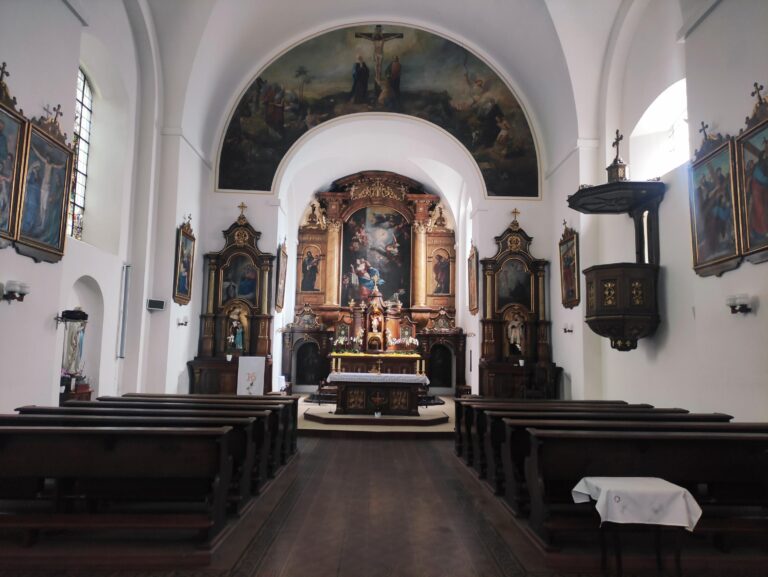
HISTORY
Church of the Annunciation of the Lord
The church is located on Dolní náměstí and belongs to the grounds of the Capuchin monastery. It is managed by the parish of St. Michael, it is protected as a cultural monument of the Czech Republic.
The history of the Capuchins in Olomouc dates back to the seventeenth century. The Capuchins came to the city as early as 1614, their original Capuchin monastery, which stood in front of the city walls near the Middle Gate, was destroyed in 1642, when the city was occupied by the Swedes. The Capuchins began building the new convent, together with the Church of the Annunciation, in 1653. In 1655 was celebrated the first mass, but the church was not consecrated until 1661.
Due to the rules of the order, from the beginning only portable organs could be used in the church. It was only in 1814 that the choir was modified for musicians, and in 1858 a new organ was purchased, which was replaced in 1913 by a new instrument from the workshop of Jan Tuček the Elder from Kutná Hora.
Even the entrance from the square did not always look like it does today, the space was modified in 1843, then the entire church was restored in 1926. And this on the occasion of the 700th anniversary of the death of St. Francis of Assisi. At that time, a fresco painting of the Annunciation of the Virgin Mary, the work of the Olomouc painter Jano Köhler, was added above the portal. In 1933, a wooden cross was installed in front of the church for the anniversary of the crucifixion of Jesus Christ.
The advent of the communist regime meant that the Capuchins had to move out of the monastery. Although the church remained open to the public and served its purpose, the monastery was taken over by the state and gradually replaced by several different institutions. It was only after the Velvet Revolution that the Capuchins could apply for their property and stake their claim on it. This was recognized by the court in 1995.
The last major renovation took place in 2012 and 2013. At that time, the church received a new light gray facade and the terrace and the front wall of the temple were also repaired.
The church itself is single nave and without a tower. Its appearance is typical of Capuchin architecture and it can boast a characteristic triangular gable. The front of the church faces the Lower Square, behind the chancel there is a monastery, which is turned forty-five degrees from the church. Above the portal is a rectangular fresco of the Annunciation of the Virgin Mary, flanked by two rectangular windows and above it by a round window with a stepped cross.
The main, wooden altar dates from 1756, it was made in his time by Josef Wesenberger, a carpenter from Olomouc. The painting was created in 1661, in the workshop of the Viennese painter Tobias Pock. On the triumphal arch is a fresco depicting the death of Saint Francis.